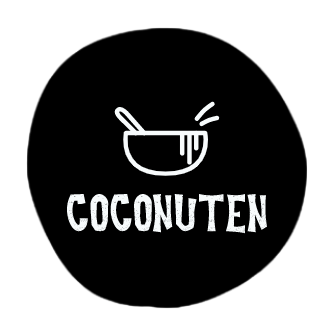Coconut water is an all-natural, fat-free beverage. Reduced in calories as well as sugars, it is abundant in essential electrolytes and vitamins. Dubbed the “fluid of life”, coconut is safe for everyone to consume alcohol fresh from the nut. As the Hawaiians claim, coconut water is “dew from the heavens”.
As soon as the coconut is opened, coconut water begins to shed its flavours and nutrients. This is partly as a result of naturally taking place enzymes located in coconut water. When peroxidase (CAPSULE) as well as polyphenol oxidase (PPO) enter contact with oxygen, responses create nutritional and also flavour losses. When coconut water is drawn out and also sheds security of the coconut’s clean and sterile setting, this area covers the reactions that occur.
MAKE-UP OF COCONUT WATER
Analytical research studies have revealed that coconut water has nutrients such as sugar, amino acids and electrolytes such as magnesium, calcium and potassium (Table 7.1). While the structure of coconut water was covered in Phase 3, it is necessary to remember the distinctions in the composition of coconut water obtained from young (7-9 months) and fully grown (10-13 months) coconuts.
The structure, physicochemical, sheathing and also ppo enzyme tasks are affected by elements such as geographical place and also selection. The compositional distinctions connect to the results degeneration reactions have as well as the high quality facets of coconut water.
Generally, young coconuts have higher sugar degrees and also overall phenolic materials than mature coconuts. While fully grown coconuts have higher protein degrees as well as pH worths than young coconuts, the quantity of minerals can also vary between young and also fully grown coconuts. The amount of potassium in coconut water increases as the coconut develops.

FEATURES AND ALSO REACTIONS OF COCONUT WATER
FLAVOUR
Flavour is the complicated experience of mouthfeel, scent and also preference. The flavor account of coconut water is built from acids, sugar, phenolic compounds as well as mineral web content. Coconut water extraction, processing, storage space and formulation can likewise impact the flavor.
In between 7-9 months, the sweet taste of coconut water boosts to its maximum when sugar web content boosts. From 10-13 months, the sugar levels coconut, as well as decrease water, tastes less sweet. This is stood for by complete soluble solids ( ° Brix).
Left at a room temperature level of 25 ° C, fresh coconut water curdle, as numerous oxidative, as well as fermentative reactions, occur. This forms acids as products. To keep the reputation of fresh coconut water, it should be kept under chilled problem whatsoever times.
In general, the level of acidity of coconut water decreases with maturity, and this contributes to the increasing sweetness of coconut water between seven to 9 months. The phenolic web content likewise adds to the overall flavor profile of coconut water. It reduces with maturation, therefore mature and young coconut water preferences are substantially different.
When oxidized, the polyphenols can also lead to an intricate response, resulting in the undesirable discoloration of coconut water.
Rancidity
Rancidity refers to creating off-flavors when the hydrolysis, oxidation, or microbial deterioration of lipids form free fats (FFA), which consequently go through further reactions and also yield off-flavored ketones.
While coconut water does not include much oil content, the lipids offered may trigger rancidity. For more information, please refer to Chapter 8 on lipid oxidation as well as lipolysis.
APPEARANCE
Coconut water is a relatively clear, colorless liquid. Its appearance is impacted by coconut maturity as well as environmental direct exposure.
Turbidity
Turbidity refers to the extent which coconut water appears to be unclear. It is also influenced by the matter of microorganisms when coconut water is revealed to the environment upon removal. If a young coconut water is left revealed with no control procedures like cooling, it can turn as turbid as mature coconut water in an issue of hrs.
Colour

Browning
Due to high oxidation as well as warm, coconut water can turn from clear or slight white turbidity to brown. This is brought by complex reactions in its parts. Usually, it is triggered by phenolic oxidation, Maillard reaction and also caramelization. These browning responses are additionally discovered in other drinks like green tea, apple and sugar walking stick juices. When these responses can be retarded or stopped completely, the quality of coconut water is preserved.
Chemical phenolic oxidation
Chemical browning is one of the most important colour responses that impact fruits, veggies, and also seafood. When coconut water is drawn out, its exposure to air initiates responses like oxidation This is promoted by enzymes polyphenol oxidase (PPO) and peroxidase (HUSK) which are normally present in coconut water. When enzymes catalyse, the oxidation of phenolic substances present in coconut water kind brownish pigments. In Table 7.2, the assessment reveals that the enzyme activity of PPO is higher than capsule. PPO is also a lot more warmth immune than shell. When it comes to coconut water, PPO is used as the sign for enzyme deactivation treatments.
Non-enzymatic phenolic oxidation.
Without PPO and shuck enzymes, phenolic browning can still take place when oxygen is present. This takes place at a decreased rate in coconut water.
Maillard reaction
It also decreases protein digestibility and amino acid availability. Beginning with a reaction between a reducing sugar like glucose and an amino acid, it finishes with the development of melanoidins which are brown, high molecular weight heterogeneous polymers.
Caramelization
It likewise takes place when foods with high sugar material, such as jams and particular fruit juices, are refined. Browning in caramelization is due to the formation of caramels, a complex combination of various high molecular weight components.
Pinking of coconut water
Pinking is a sensation that takes place just in young coconut water. Pinking is due to the intermediate substances formed from the enzymatic phenolic oxidation of coconut water. Contrasted to grow coconut water, young coconut water contains a higher phenolic content, PPO and also POD enzyme activity.
In the primary procedure, PPO catalyses the oxidation of phenolic substances to create brownish polymers. The substance which triggers pinking is an intermediate in this reaction, i.e. o-quinone.
In the second procedure, this pink or red substance can additionally respond with amino acids to form even more compounds like p-amino-o-quinone.

NUTRIENTS
Coconut water includes several water-soluble vitamins. In specific, Vitamin C is a delicate substance in coconut water.
Anaerobic and cardio deteriorations.
Both aerobic and also anaerobic degradations happen simultaneously. Which one predominates the other depends upon storage temperature level and also the accessibility of oxygen.
As the name implies, the anaerobic pathway does not require oxygen. It is primarily driven by storage temperature level.
For aerobic destruction, the pathway requires oxygen. This is purely pertaining to the visibility of headspace oxygen, the dissolved oxygen in coconut water, and also the oxygen obstacle residential properties of the plan.
IMPACTS OF ENVIRONMENTAL ELEMENTS AS WELL AS INGREDIENTS ON TOP QUALITY
Raw, all-natural, unrefined coconut water impacts the final top quality of the packaged product. While there are means to maintain the high quality and also preserve of the raw product, it is not possible to boost it.
POST-HARVEST STORAGE
To boost shelf life, tender as well as fully grown coconuts need to be harvested meticulously. The perianth ought to remain intact, as well as the nuts must not be damaged or fractured. Contrasted to partly dehusked nuts, the quality of coconut water from non-dehusked nuts can be kept for an extended time period.
After gathering, the husk of the coconut assists to reduce the above adjustments in the coconut water over the storage duration. The husk also acts as added protection from cracks that would certainly lead to the contamination and at some point perishing of coconut water. As the husk aids to preserve nut high quality and increase the storage life of coconut water, the preference of stored dehusked nuts can subsequently become much less desirable than non-dehusked nuts.
EXTRACTION TECHNIQUES
Different removal techniques, like boring or halving the nuts, differ the effect on coconut water extraction. This is due to the fact that young and also fully grown coconuts have different husks and also coverings.
In drilling, there is normally much less contamination by coconut fibers, dirt as well as enzymes from the various other parts of the coconut. As the fibres are drier as well as coverings are harder, it is much easier for them to drop right into drawn out coconut water.
WARMTH
Warmth has negative and also positive impacts on coconut water, depending upon the range of temperature level and the parameter under monitoring. In general, a rise in temperature causes an increase in response prices. At specific temperature ranges, this may result in unfavorable effects such as browning as well as microbial reproduction. Thus, coconut water should be cooled off to below 4 ° C after coconut water removal as well as filtration.
On the other hand, appropriate application of warmth therapy leads to favorable results on coconut water. Warmth can be utilized for enzyme sanitation, deactivation or pasteurization to kill off microorganisms and also perishing bacteria. Specifically, in direct heat therapy like vapor injection, the temperature level quickly rises and falls at the begin and also completion. Hence, there is much less thermal influence than indirect heat treatment. Therefore, coconut water that goes through indirect heat treatment becomes browner at the start of their packaged life span. Based on its browning index, it likewise has a much shorter shelf life. To find out more on direct and indirect warm therapies.
MATURATION AND STORAGE TEMPERATURE LEVEL.
Between fully grown and also young coconut water, the latter spoils much faster. As compared to the previous, the top quality specifications like pH and turbidity are mediocre. There is likewise most likely to be a lot more contamination in mature coconuts, as even more husk and covering items come under the removed water throughout drilling. On top of that, fully grown coconut water is normally a lot more turbid than young coconut water at any phase of storage.
As temperature boosts from 4-35 ° C during storage, there is a much faster transform in the total soluble solids web content, pH, and also titratable level of acidity of neglected coconut water. There are additionally noticeable visual changes for fully grown coconut water. For example, turbidity boosts, browning happens and pH decreases.
OXYGEN DIRECT EXPOSURE.
With oxygen direct exposure, oygenation increases pinking as well as browning. This results from oxidation of polyphenols which are catalysed or otherwise. Hence suppliers often include anti-oxidants like ascorbic acid and salt metabisulphite to feed on oxygen, making it not available for other responses.
Nitrogen burying may be made use of in storage space and aseptic tanks, where sterile air is replaced with nitrogen. Because of this, the air in the headspace includes 99.9% nitrogen, a rise from a first content of 78% nitrogen and also 21% oxygen.
ANTIOXIDANTS.
L-ascorbic acid (Vitamin C).
Ascorbic acid, or else known as Vitamin C, plays a vital function in food processing. Important for human nourishment as well, its crucial antioxidant impact serves as an inhibitor of enzymatic browning. This has been commonly utilized in the food sector. Nevertheless, with high ascorbic acid levels as well as the presence of oxygen, browning may also take place. This is due to the thermal decay of ascorbic acid.
By its very nature, coconut water does not contain much ascorbic acid. When ascorbic acid is included as an antioxidant, close attention must be paid so its level does not obtain so high that it promotes ascorbic acid browning rather. As a whole, ascorbic acid levels of 20-50 ppm can assist to reduce enzymatic browning.
Sodium metabisulphite (SMB).
It ends up being unavailable for various other browning responses when oxygen reacts with SMB. Sulphite additionally minimizes o-quinone, which is generated by PPO catalysis, to a less responsive diphenol. This protects against later condensation of complicated brown melanins.
While many nations regulate the visibility of SMB in coconut water at 30 ppm optimum, it is advisable to check with regional authorities on one of the most current permissible levels of this antioxidant.
MICROBIOLOGY OF COCONUT WATER.
Bacteria are regularly made use of in generating foodstuff like cheese as well as yoghurt. Nonetheless, particular microbes can create gastrointestinal disorder, human disease, and also putridity.
In microbes, there are many biochemical as well as enzymatic systems interested in coconut water and also its products. These can be subdivided into which constituents they break down into as well as their corresponding results.
BREAKDOWN OF OIL.
Fat is broken down by enzymes (generally lipase) in a procedure called lipolysis right into cost-free fatty acids. Via regular handling routines like pumping, sprinkling and stirring, there is a greater chance for lipase to deal with the oils. While some of the fatty acids created are volatile, release solid smells, or add to a sour taste, numerous bacteria and also moulds that break down healthy proteins likewise break down oil via oxidation.
BREAK DOWN OF CARBOHYDRATES.
The microbe’s enzymes establish which carbohydrates they can break down into, as well as to what extent. While fermentation occurs in most cases, carbohydrates can be totally degraded to carbon dioxide and water with oxidative metabolic rate.
FAILURE OF HEALTHY PROTEIN.
Proteins break down in a procedure called proteolysis, which entails the enzymes called proteases. When they weaken healthy proteins right into peptides, they are more broken down by various peptidases to smaller peptides as well as amino totally free acids. While amino acids can be reused once again for healthy protein synthesis to expand or multiply bacteria, they can additionally be broken down by oxidation or fermentation procedures.
Healthy proteins as well as their constituent amino acids have a vast combination of chemical aspects. They include carbon, hydrogen, oxygen, phosphorus, sulphur as well as nitrogen. The failure of healthy protein results in a much bigger variety of acids, alcohols, gases like hydrogen, carbon dioxide, hydrogen sulphide, ammonia, and various other compounds. Particularly, ammonia, which is alkaline and has a solid odour, is constantly produced. For more information on proteolysis, please describe Chapter 8.
As coconut water has trace amounts of sulphur-containing amino acids (e.g. methionine as well as cysteine), the breakdown of these amino acids may generate hydrogen sulphide, which produces a rotten egg odor.
While fully grown coconuts have greater healthy protein levels and also pH values than young coconuts, the amount of minerals can also vary between young and also fully grown coconuts. In basic, acidity of coconut water decreases with maturation, and this adds to the boosting sweet taste of coconut water between seven to nine months. If a young coconut water is left subjected with no control measures like cooling, it can turn as turbid as fully grown coconut water in an issue of hours.
Contrasted to mature coconut water, young coconut water is composed of a greater phenolic material, PPO as well as Sheath enzyme activity.
In addition, mature coconut water is typically a lot more turbid than young coconut water at any stage of storage.

